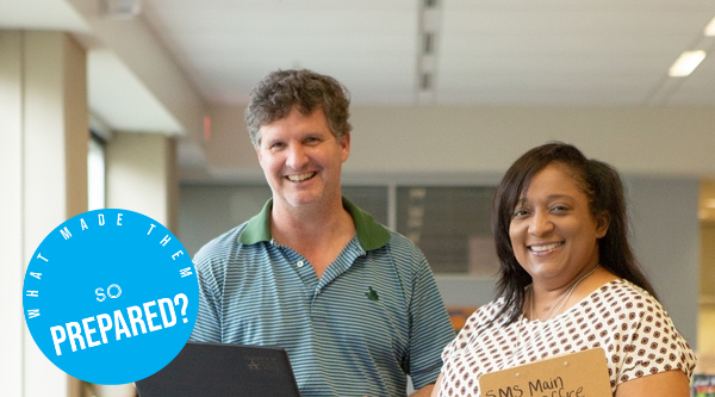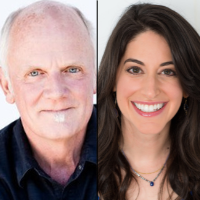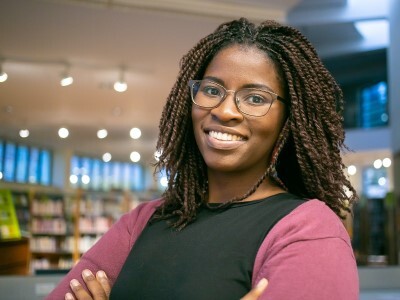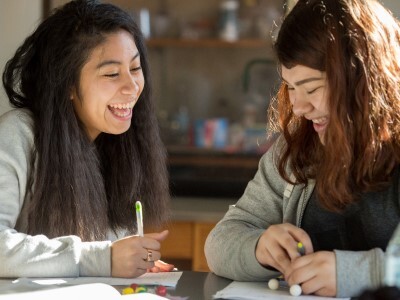Clear Values, Compassionate Leadership, and a Can-Do Attitude
Topics

Next generation learning is all about everyone in the system—from students through teachers to policymakers—taking charge of their own learning, development, and work. That doesn’t happen by forcing change through mandates and compliance. It happens by creating the environment and the equity of opportunity for everyone in the system to do their best possible work.
What Made Them So Prepared?
A Project about K-12 Resilience
These districts faced the complex challenges of the pandemic with a human-centered approach that allowed their response to be nimble and agile.
“As a Superintendent, my ever present concern is governance. How does the system get led? How do people in leadership positions act in the face of a tumultuous situation like this? We are not foreign to crisis. We've been through some rough times, and we have a blueprint, and we have risen to the occasion each time. We fall back on some tried and true responses. How do we respond? We fall back on our critical response protocols. It’s quite clear what our roles are. The board’s job is to communicate confidence and stay out of the way. My job is to mobilize my team. We discovered we were not starting from scratch. The past was calamitous. Overnight we formed a team. At first, and always, there is a desire to fix, fix, fix. I said, ‘Let’s stop and map out the guiding principles that would drive our work. Let’s get those out into the field to our principals and vice principals. Compassion, hope, and equity will drive our work.’ We needed to anchor our actions to these values as a team. We had done a version of this before and come out stronger for it. A can-do attitude is part of our culture, notwithstanding trepidations. We anchored ourselves in our values, provided clear guidance, and then afterwards people told us what helped was our clarity, which is in our DNA.”
–A Deeper Learning Dozen Superintendent
We have been talking with district leaders who are part of our Deeper Learning Dozen (DLD) community of practice across North America to find out what made them prepared to face the disruption of the COVID pandemic. Across all of the conversation, three factors resound:
- Clarity of values and purpose that drive direction, with equity being central to those,
- Leadership that is compassionate and broadly distributed, and,
- A "can-do" attitude based on strong relationships and commitment to actualizing the espoused values.
These core anchors of more humane and human-centered practice pervaded everyone’s sense of agency and willingness to be of service in whatever way was needed, regardless of job title or position in the community. And while these three traits expanded during COVID, they were years in the making for all of these districts.
We surveyed all of our DLD districts as a part of the What Made Them So Prepared? project, and interviewed those who responded that they were willing to talk with us in more depth about their experiences. We interviewed superintendents and other senior leaders from Revere, Massachusetts; Burlington, Vermont; and Vancouver and Abbotsford, in British Columbia. We also learned about other districts’ responses from earlier conversations with our DLD district leaders. The stories our leaders shared were very personal and very specific to the places and people, but the messages were consistent and universal. The districts deepened their capacity to respond to the pandemic in the three ways we list above:
- When they had already focused on building strong relationships, with students and families, among teachers, across district divisions or initiatives, from senior leaders to the community and the school board,
- Where leaders were passionate and vocal in public about centering care for especially the most vulnerable young people and families, and,
- When they were committed to the health and wellbeing of their teachers as much as they were for their students and families—and willing to demonstrate that consistently and persistently in every communication.
One superintendent described her leadership this way:
“I am a passionate and child-centered leader… When you can walk into any meeting, take any [phone] call, and speak about what you care about—when you have that, it lifts up your team, for the kids, families, and communities, and that [value] transfers to the schools.”
“If you get caught up with all the angst and pressure out there in a pandemic, you can get pulled off course really quickly. Having that vision and clear direction made sure that people were set up for success in an environment that was constantly changing.”
Trusting Relationships and Authentically Distributing Leadership
Beyond demonstrating that passion and those values, leaders who prioritized building trusting relationships and distributing leadership, authority, and power, and who could thus genuinely ask for help, mobilized their communities to go above and beyond the normal ways we “do school.” Leaders with sometimes decades of consistent leadership in addition to that focus on trusting relationships achieved even more. One example:
“When we were planning last summer for this past school year, we did that in a community way, and included parents and teachers in developing our reopening plan (we had 7 teams of 20 people). We built time into the schedule that was a parent-communication block where we could meet, Zoom with parents. During the pandemic, we suddenly went to a 1:1 program which we had not had before. Every day technicians were on a support desk that parents and grandparents and students could access from 7:00 a.m. to 10:00 p.m. We realized the importance of making time for communication from the community in addition to generating communication out to the community. We did periodic surveys, and every time we did, we shared the results with the community at large. School board community meetings are televised, so we could present the survey results as, ‘Here is the deficit, and here is our plan to address it.’”
Often, we would hear from one leader something that echoed across all our interviews, as is the case with this example:
“Our most important organizational trait, and one I embrace personally, is the idea of collaboration and distributed leadership, and not a hierarchical approach. Having that and having modeled that all these years made it possible for people to step up and take initiative. It might have been a principal, it might have been a parent. We’ve worked a long time at that. We’ve made people feel able to step up and make decisions, which has been a truly effective way for us all to engage with each other. In a crisis that’s what you need.”
Being Nimble and Agile in the Face of Disruption and Complexity
The districts we talked to faced many challenges that required mostly technical solutions. But all of the ways they responded to these challenges were driven by people whose values aligned with the need, and who demonstrated a belief that they could figure it out.
For example, staff in some of the districts worked to find laptops for every child and make sure their homes were not in internet dead zones. One IT director in one of these districts summed up this “can-do” attitude; when asked at the start of the pandemic if he had enough laptops, he replied, “We don’t, but we can.” Another was the school board member who volunteered to take over managing logistics for feeding all the families across the community after the director of food services came to the superintendent at the first sign of the shutdown, saying, “OK, we need to figure this out.” Then there was the retired superintendent who helped unload 1,200 lbs. of frozen chicken a day for weeks. One district solved two immense problems at once by just deciding that no one would lose a job—not custodians, not secretaries, not bus drivers—and those people shifted to delivering laptops, organizing PPE (personal protective equipment), or other just-in-time responses to emerging challenges. “Everybody I talked to asked, ‘What do you need, how can I help?’ Nobody said, ‘That’s not my job.’”
This superintendent added, “I have deep down a sense that no problem is insurmountable. We can do this, we can get there. It’s OK to try and not get it exactly right.” So, beyond the “can-do” attitude was the ability to be nimble and collaborative and to try again when something didn’t work right the first time. One leader told us,
“In the immediate closure, we also had a superintendent change. The DLD team [senior leaders in the district who attend the Deeper Learning Dozen convenings] got together in the spring to talk and see what a DLD-informed process would be. We decided it would be co-constructed, collaborative, and everything would be emergent. That group was really helpful in working through the challenges, reinventing our jobs, figuring out how we could all be supportive, from the immediate craziness of the closure to thinking about how to do the reopening differently.”
Overall, though, one superintendent echoed what we heard from all of the leaders we spoke with, when he recognized that what might have seemed like purely technical or procedural problems were in fact not:
“Here is the feedback I shared with [my team]: when situations occur, there are critical moments, a fork in the road, and if you look at it as a technical exercise as opposed to a critical incident where you see its impact on a system, a community, a family, and a kid, and if all you do is look at the issue as suspending a teacher and sending a message home, then you miss the complexity of the situation because [those impacts] fan out into the entire community.”
These district leaders knew what one individual we talked with described this way:
“[This work] requires a team with multiple roles and clear direction set from the superintendent and board. Organizations that struggle haven’t had that vision. If you get caught up with all the angst and pressure out there in a pandemic, you can get pulled off course really quickly. Having that vision and clear direction made sure that people were set up for success in an environment that was constantly changing. That angst? The organization [we were able to demonstrate] helped people manage their anxiety. It helped us pivot. We didn’t always go in the right direction, but being able to adjust and adapt we did quite well. Given the changing information, going back to those clear ideas and vision made it easier for us to pivot.”
“Food distribution was revamped within a month; the removal of bureaucratic structures was an asset; we were not encumbered by protocols and could respond in a thoughtful, child-centered way.”
Many district leaders told us that they had applied the idea of “symmetry” to how they supported their staff members. Symmetry is one of our DLD principles, that if you want deeper, equitable learning experiences for students, then you need to create the conditions for adults to have those kinds of learning experiences as well; it’s about the “fractal nature” of human systems, though not always about the best aspects of those systems (inequitable systems, unfortunately still the norm in public education, recreate that inequity across the system as well). In this case, that symmetry meant focusing on health and wellbeing for their staff as well as for their families and students. Some of the districts held restorative circles weekly, and some had weekly special days with no students so staff could focus on self-care and working together collaboratively.
Traditionally, school district bureaucracies are not that nimble or agile, able to respond quickly to emergent needs. But several of the district leaders we spoke with described how they shifted district protocols to respond to the crisis: “We were nimble and responsive, and we were blown away by how nimble and responsive we were—food distribution was revamped within a month; the removal of bureaucratic structures was an asset; we were not encumbered by protocols and could respond in a thoughtful, child-centered way.…” As another leader put it, “[This was] a significant shift in a system that does not shift easily.”
Teachers Went Above and Beyond
Of course, across all the districts we surveyed, teachers went above and beyond, even though they were scared and exhausted. At first that meant turning on a dime over that first weekend as the shutdown happened, reinventing curriculum for a virtual classroom that almost no one knew much about. How would teachers maintain or increase a sense of connection, challenging enough already for the most vulnerable students? How would they create engaging and meaningful learning online? How would they continue to build community, and continue to center social-emotional learning and restorative practices?
From our conversations, we learned that teachers and schools were able to keep connected to their students and keep students engaged because these relationships and conditions for learning had already been central to their philosophy and practice, and because students already had a voice and a sense of agency in their own learning. Concomitantly, there was a shift in how the districts viewed professional learning during this time. In one place, we spoke early in the pandemic with district professional development staff who were confounded with what to help teachers learn to do. We asked if they had considered that the best new ideas for how to teach virtually in a pandemic might already be developing among the teachers who were reinventing themselves overnight and were continuing to experiment and find new approaches that worked. So probably the best thing the district people could do would be to get the teachers together to share with each other what they were learning. Another district decided on this approach right away. The district’s staff created a student-free teacher collaboration day each week and provided a process that teachers could use during that day to connect and share resources and practices across the district. Each week they got feedback from the teachers about how it was working and fine-tuned it based on their suggestions. A continuous improvement strategy arose out of an urgent need! This is how communities of practice—situated in dense networks of communication and sharing—accelerate innovation, straight out of network innovation theory.
“Teachers made all kinds of excuses to get students together. In addition, we removed punitive measures to reduce stress. We decided to focus on people rather than content. Families were extremely grateful and gave us lots of positive feedback for these changes.”
Engaging Students: “Kids are always capable of so much more than we think they are.”
And what about the students? One district leader told us,
“Realizing how isolated students were, PE teachers made sure kids could see each other. Physical presence was extremely important. There were chorus pop-up concerts in the park. These kinds of innovative responses helped to create a feeling of togetherness, which was really important for the kids. I was really impressed by faculty making these connections happen. We had English in the park, Shakespeare through swashbuckling. Teachers made all kinds of excuses to get students together. In addition, we removed punitive measures to reduce stress. We decided to focus on people rather than content. Families were extremely grateful and gave us lots of positive feedback for these changes.”
In another district, a longstanding state policy that mandated that students missing a certain number of classes get automatic failure grades was quietly discarded, a move the district had wanted to make for several years as a part of shifting to a mastery grading system. In fact, several districts that had been on the cusp of redesigning their grading systems to be more fair and equitable, and to focus more on students actively demonstrating their learning, used the opportunity that the COVID crisis created as a “blameless disruption” to enable them to move forward with their redesign. We also personally witnessed numerous students stepping up to take initiative in helping their teachers figure out the technologies that supported virtual and distance learning, as well as helping co-design lessons and engaging activities for their peers, using those technologies. As one teacher put it, “Kids are always capable of so much more than we think they are.”
And speaking of rethinking what it means to be “child-centered,” many of the DLD districts had already committed to increasing student and family voice and agency, especially among those who traditionally have been least well served by the way we do school. The pandemic once again was a disruption that provided a space for that vision and its enactment to grow.
“Blameless Disruption” Supports Transformation for Equity and Deeper Learning
All the districts in the Deeper Learning Dozen have been doing the work of transformation to support equitable access to deeper learning for each and every young person and adult. If there is one clear message about this pandemic as a “blameless disruption,” it is that this kind of indeterminacy, complexity, and turbulence will become more the norm as the 21st century progresses. If we want to be ready for that, as schools, as districts, but more important, as young people who will be the leaders in addressing that complexity critically and creatively, then our leaders and our systems have to become much more agile and nimble. But those ways of being cannot do the job without clear values, compassionate leadership, and a can-do attitude. That is the work we have been doing together for some time now.
So, finally, this is how one of the DLD district leaders described the impact of that collective experience:
“Being in the DLD project really set me up [to be prepared for this pandemic]. It has forced me into spaces I would not have gone into, allowed for me to adjust and adapt through the pandemic. The work with the DLD has prepared us for situations like the pandemic. The values and principles, engagement, uncomfortable discourse for the benefit of students and their families, an ability to do that with compassion and understanding... I probably would not have approached it in the same way. Had we not been engaged in student voices work, had we not had an equity framework, I don’t know if we could have gotten there if not for these. [It allowed us to create] a place that was compassionate and just. [The DLD] convenings set a course for me to think in a different way, to have a different mindset with folks. It truly is experiential, I can’t just tell you about it. You have to go through it.”
Like a pandemic.
This article was developed through the What Made Them So Prepared? project. What can we learn from public schools and districts whose learning models and organizational cultures made them genuinely prepared for the challenges of COVID? The answer should shape public education for decades to come. Nine organizations, assembled into a partnership by Next Generation Learning Challenges (NGLC), are collaborating this year to explore that answer, through a project funded by the Leon Lowenstein Foundation: What Made Them So Prepared? Follow #PreparedProject on Twitter.
Photo at top by Allison Shelley for EDUimages.




